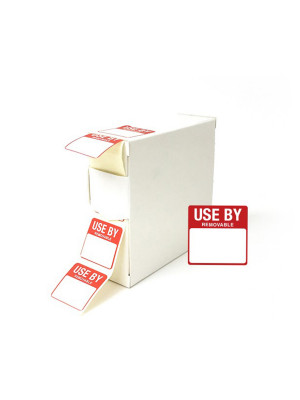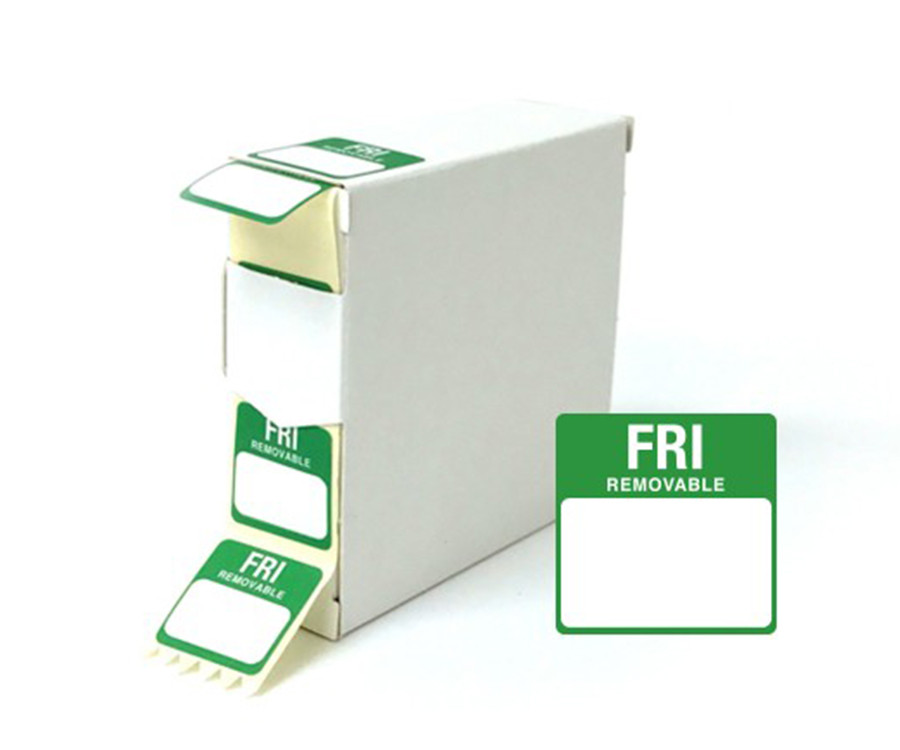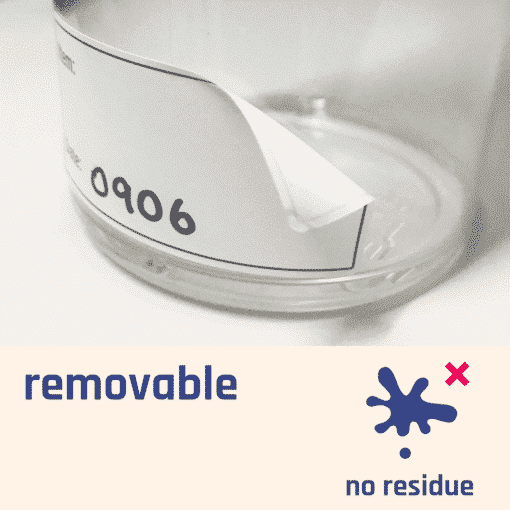39 storage instructions on food labels
Food labelling and packaging: Overview - GOV.UK Packaging If you package food yourself, you must use packaging that's suitable for food use. Suitable packaging is marked 'for food contact' or has a symbol on it that looks like a wine glass and a... Date marking & storage advice | NSW Food Authority Date marking and storage instructions on food labels tell us how long a food will keep before it deteriorates. Best before & use by dates Food labels have date marks to inform us about their shelf life. The marks tell how long food can be kept before it begins to deteriorate. All food with a shelf life of less than 2 years must be date-marked.
How to read food labels | Food safety at home | NZ Government Storage instructions. Food manufacturers or suppliers must also include on the label any specific food storage instructions needed to keep the food safe to eat. Allergen declarations (allergy labels), warning, and advisory statements Allergen declarations (allergy labels)

Storage instructions on food labels
PDF FOOD STORAGE GUIDELINES - foodbanksbc.org In general, high-acid canned foods such as tomatoes, grapefruit and pineapple can be stored on the shelf 12 to 18 months; low-acid canned foods such as meat, poultry, fish and most vegetables will keep 2 to 5 years — if the can remains in good condition and has been stored in a cool, clean, dry place. Dates on Egg Cartons Storing food safely - Food Standards if opening packaged food, make sure you can still read the date marking and follow the manufacturer's instructions. Need more information? Safe Food Australia is a guide to the food safety standards in Chapter 3 of the Food Standards Code. Food storage is covered under Standard 3.2.2 clause 6. Potentially hazardous food is explained in ... › food › food-ingredients-packagingOverview of Food Ingredients, Additives & Colors | FDA International Food Information Council (IFIC) and U.S. Food and Drug Administration (FDA) November 2004; revised April 2010. Also available in printable brochure format PDF (330 kb)
Storage instructions on food labels. › Shelf-Reliance-Pantry-CanAmazon.com: Shelf Reliance Pantry Can Organizers ... Airtight Food Storage Containers Set with Lids (24 Pack) for Kitchen and Pantry Organization - BPA Free Kitchen Canisters for Cereal, Rice, Flour & Oats - Free Marker and 24 Labels 4.7 out of 5 stars 20,893 Safe food storage at home - EUFIC Foods labelled with 'keep refrigerated' and most foods with a 'use by' date, such as pasteurised milk, meat, ready meals, etc., should be kept in the fridge so they stay safe until the use by date given on the label. The cool temperature (below 5°C) slows down the growth of harmful microbes. Gallery of 31 safe handling instructions label on meat and ... 31 Safe Handling Instructions Label On Meat And Poultry Labels Design images that posted in this website was uploaded by Footage.presseportal.de.31 Safe Handling Instructions Label On Meat And Poultry Labels Design equipped with a HD resolution 600 x 600.You can save 31 Safe Handling Instructions Label On Meat And Poultry Labels Design for free to your devices. Storage of Food - Warwick Storing food in a freezer. You can keep food safely in the freezer as long as it has stayed frozen the whole time; however, the taste and texture of food changes if it's frozen for too long. Check instructions on food labels or in the freezer's handbook to see how long food should be frozen.
The Importance of Food Labels | Requirements for Packaging These instructions help your consumers safely store products before and after opening the packaging, which will ensure they remain safe to consume. For example: 'Store in a cool, dry place. Once opened, refrigerate and consume within 3 days.' Contact details. Include the country of your business, the name of your business and a contact address. The Importance of Food Labelling | Eufic These instructions may also indicate how to store the food once the package is opened (e.g., 'Refrigerate after opening'). Although consumers often use storage conditions and preparation guidelines, it is usually only when they buy a new product and not when it is a product they have previously purchased. How To Read Food and Beverage Labels | National Institute ... There are three types of product dates commonly printed on packaged foods and beverages: "Sell by" tells how long the manufacturer suggests that a store should sell items such as meat, poultry, eggs, or milk products. Make sure you buy by this date. "Use by" tells how long items will be at peak quality. Food Standards Agency - Food labelling e-learning course Storage instructions for the unopened food are an absolute requirement for foods marked with a use by date, to enable the food to achieve the stated date in a safe condition. There are no further...
Safe food storage | Food Standards Scotland | Food ... When the label says 'keep refrigerated', make sure you do keep the food in the fridge. If the food isn't labelled with any storage instructions and it's a type of food that goes off quickly, you should put it in the fridge and eat it within two days. Some jars and bottles need to be kept in the fridge once they've been opened. Food date labelling | WRAP On this page you will find key information on how to apply food date labels, storage and freezing advice to ensure food is safe to eat, reduce consumer food waste and remove barriers to redistribution. Category-specific guidance and checklists are included; proven to be effective in helping consumers reduce their household food waste. * Food law [Meat Safe Handling Labels] - 17 images - meat handling ... [Meat Safe Handling Labels] - 17 images - meat safety, 33 safe handling instructions label on meat and poultry labels, 34 safe handling instructions label on meat and poultry labels, noble products 2 x 2 safe food handling instructions permanent label, › six-reasons-why-foodSix reasons why food labelling is important Mar 25, 2019 · Labels provide warnings and important information about the ways to use a product (for example, storage and cooking instructions), which are necessary for keeping food safe. 3. Stops you from buying counterfeit products – Preventing fraud is one of the main aims of food labelling.
Are You Storing Food Safely? | FDA Check storage directions on labels. Many items other than meats, vegetables, and dairy products need to be kept cold. If you've neglected to properly refrigerate something, it's usually best to ...
42 storage instructions on food labels food labelling - food and nutrition | nhs inform follow the storage instructions on labels ('keep refrigerated', 'store in a cool and dry place', 'refrigerate after opening') consume it within the numbers of days given on the label ('once opened, use within 3 days') when storing food and drink in the fridge, make sure the temperature is below 5°c …
Date markings and storage instructions on food labels ... The Food and Drugs Regulations (FDR) require prepackaged products with a durable life (definition) of 90 days or less to be labelled with date markings and storage instructions (where applicable) [B.01.007, FDR]. For foods with a durable life greater than 90 days, refer to Voluntary declaration. Foods packaged at a place other than the retail premises
Food labelling requirements - "Instructions for use" In order to ensure correct utilization of the food, the Food Regulations require the manufacturer or the packer to mention the " Instructions for use" on the label on the Pre-packaged food. The instructions may include the directions regarding reconstitution or dilution of the product before use, where applicable. For example, 10.1.
Labelling - Food Standards Food labels also help to protect public health and safety by displaying information such as use by dates, ingredients, certain allergens, instructions for storage and preparation, and advisory and warning statements. FSANZ sets standards for what information must be on food labels. FSANZ has developed information on a range of labelling topics.
Food labelling - Food and nutrition | NHS inform To ensure food remains safe to eat, you should always: follow the storage instructions on labels ('keep refrigerated', 'store in a cool and dry place', 'refrigerate after... consume it within the numbers of days given on the label ('once opened, use within 3 days')
› drinks › ensureHow long Does Ensure Last? Shelf Life and Storage Information Apr 21, 2015 · Practicing proper hygiene and food safety techniques will help prevent foodborne illness. The smell will be slightly altered when adult nutrition has gone bad. Although adult nutrition will be OK to consume for a few weeks after the use by date, it is not recommended.
› search › resultsLinkedIn We would like to show you a description here but the site won’t allow us.
Food labelling: giving food information to consumers - GOV.UK Labelling pre-packed food Add information about country of origin and special storage conditions Label allergens List the ingredients Give a quantitative ingredients declaration (QUID) Show the...
PDF Food Labeling Guide - FDA Food Labeling Guide Additionalcopies are available from: Office of Nutrition, Labeling, and Dietary Supplements HFS-800 Center for Food Safety and Applied Nutrition Food and Drug Administration...
Storing food safely | nidirect follow any freezing or thawing instructions on the label thaw it in the fridge so that it doesn't get too warm, or, if you plan on cooking it as soon as it's defrosted, you could defrost it in a...
Packaging and labelling | Food Standards Agency Food labels must be marked with either a 'best before' or 'use by' date so that it is clear how long foods can be kept and how to store them. Further information can be found in the guide on date...
Food Package Labeling - an overview | ScienceDirect Topics There are 12 mandatory pieces of information that must be present on all European Union (EU) food labels: product name, list of ingredients, allergens, quantitative ingredient declaration, net quantity, durability dates, storage, instructions for use, business name and address, country of origin, nutritional declaration, and alcoholic strength.
SOP on Labeling & storage of Raw and Packaging materials ... 6.6.1 Loose (non-intact) materials shall be kept separately and has to be labeled properly. 6.6.2 The storage conditions for the Raw materials shall be maintained. 6.6.3 Drums, Canister, Boxes & Bags shall be kept on pallets. 6.6.4 Liquid Raw materials shall be stored in separate storage area under lock & key protected from direct sun light.
Storage instructions - Date markings and storage ... Storage instructions are mandatory on foods that require a "best before" date and where the storage conditions differ from normal room temperature. In some cases, certain products may have additional storage instruction requirements. Refer to the appropriate commodity listed under the Food-specific labelling requirements section of the Industry labelling tool for more information. Low-acid foods packaged in hermetically sealed containers

Friday 25x25mm Food Labels - DY048 - Day of the week Food Storage Labels - Catering Safety ...
› food › food-ingredients-packagingOverview of Food Ingredients, Additives & Colors | FDA International Food Information Council (IFIC) and U.S. Food and Drug Administration (FDA) November 2004; revised April 2010. Also available in printable brochure format PDF (330 kb)
Storing food safely - Food Standards if opening packaged food, make sure you can still read the date marking and follow the manufacturer's instructions. Need more information? Safe Food Australia is a guide to the food safety standards in Chapter 3 of the Food Standards Code. Food storage is covered under Standard 3.2.2 clause 6. Potentially hazardous food is explained in ...
PDF FOOD STORAGE GUIDELINES - foodbanksbc.org In general, high-acid canned foods such as tomatoes, grapefruit and pineapple can be stored on the shelf 12 to 18 months; low-acid canned foods such as meat, poultry, fish and most vegetables will keep 2 to 5 years — if the can remains in good condition and has been stored in a cool, clean, dry place. Dates on Egg Cartons












Post a Comment for "39 storage instructions on food labels"